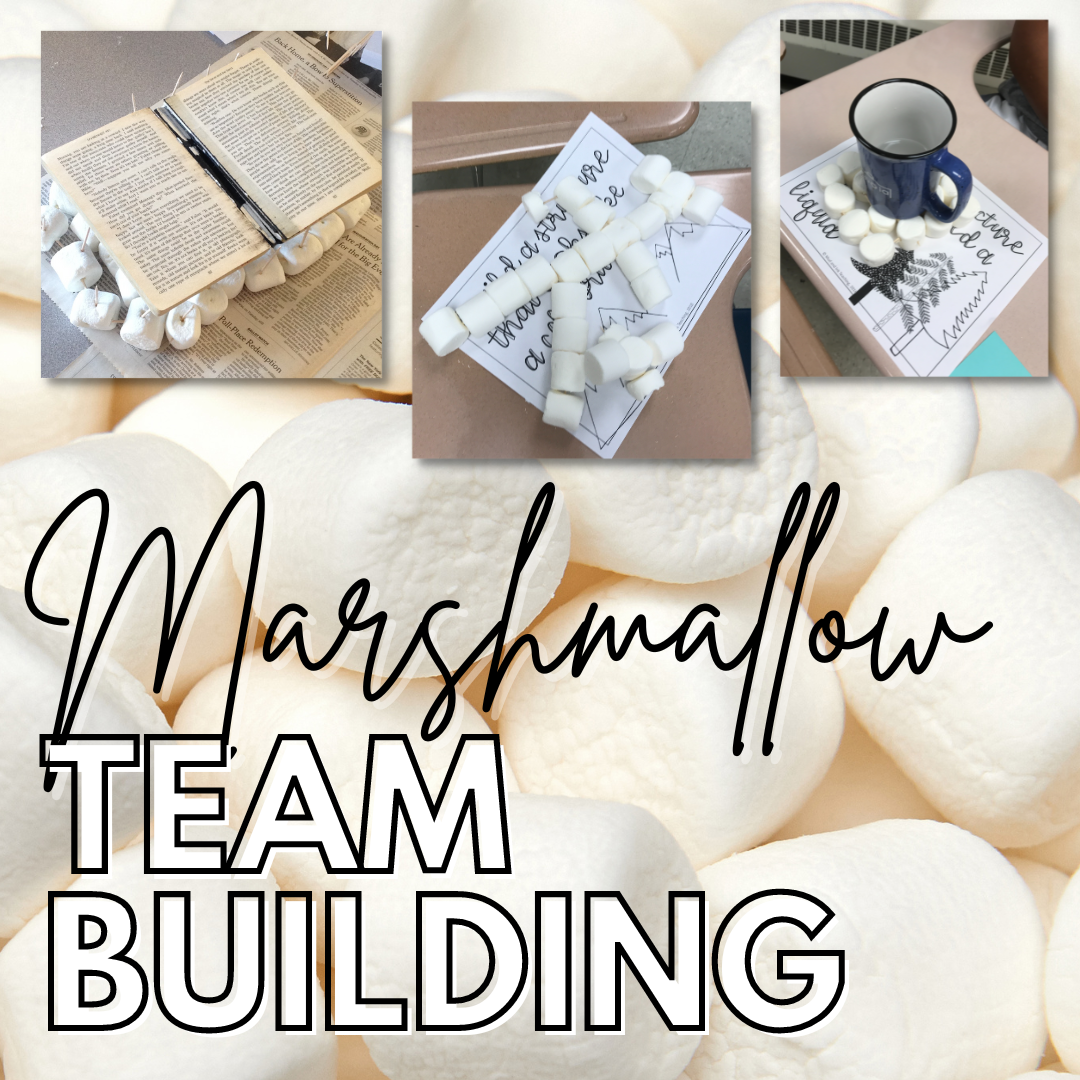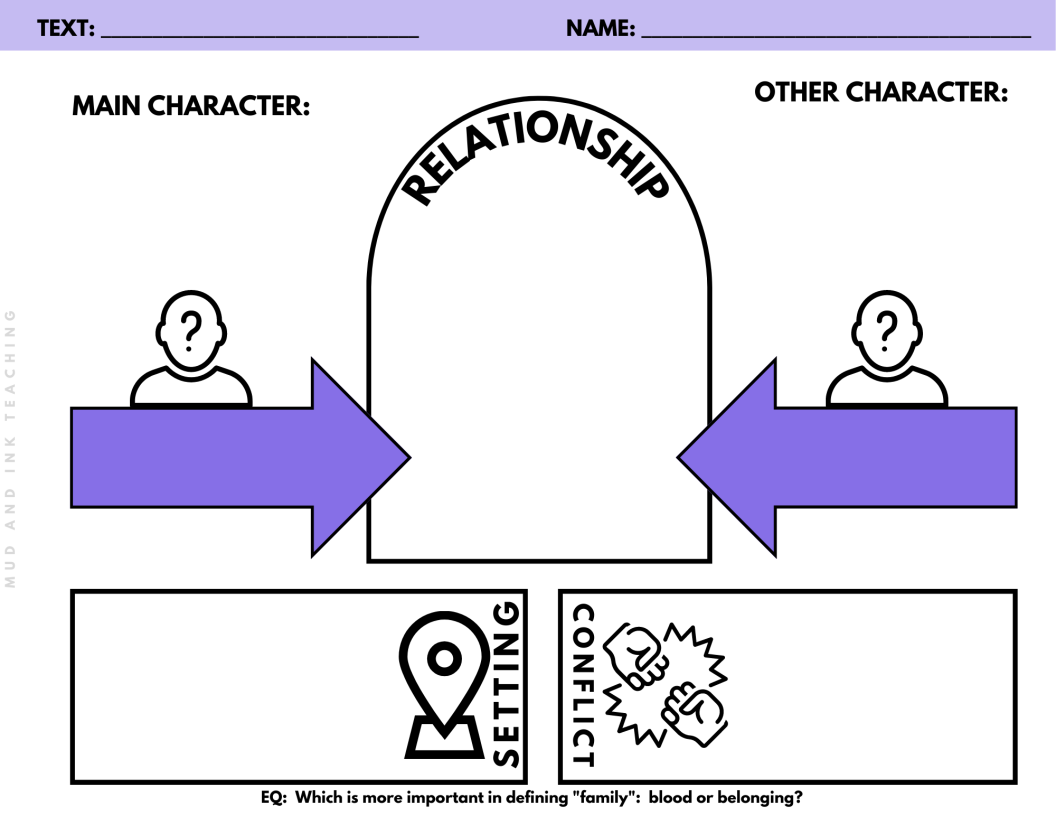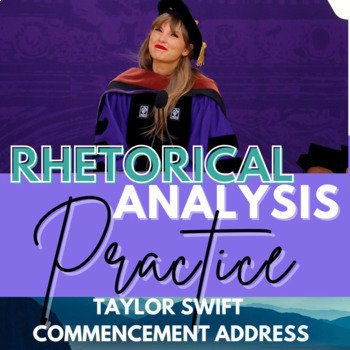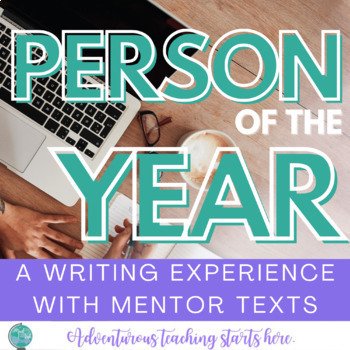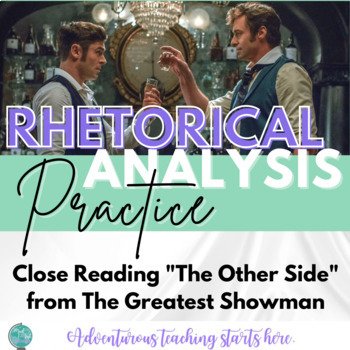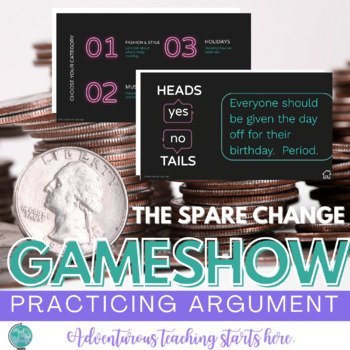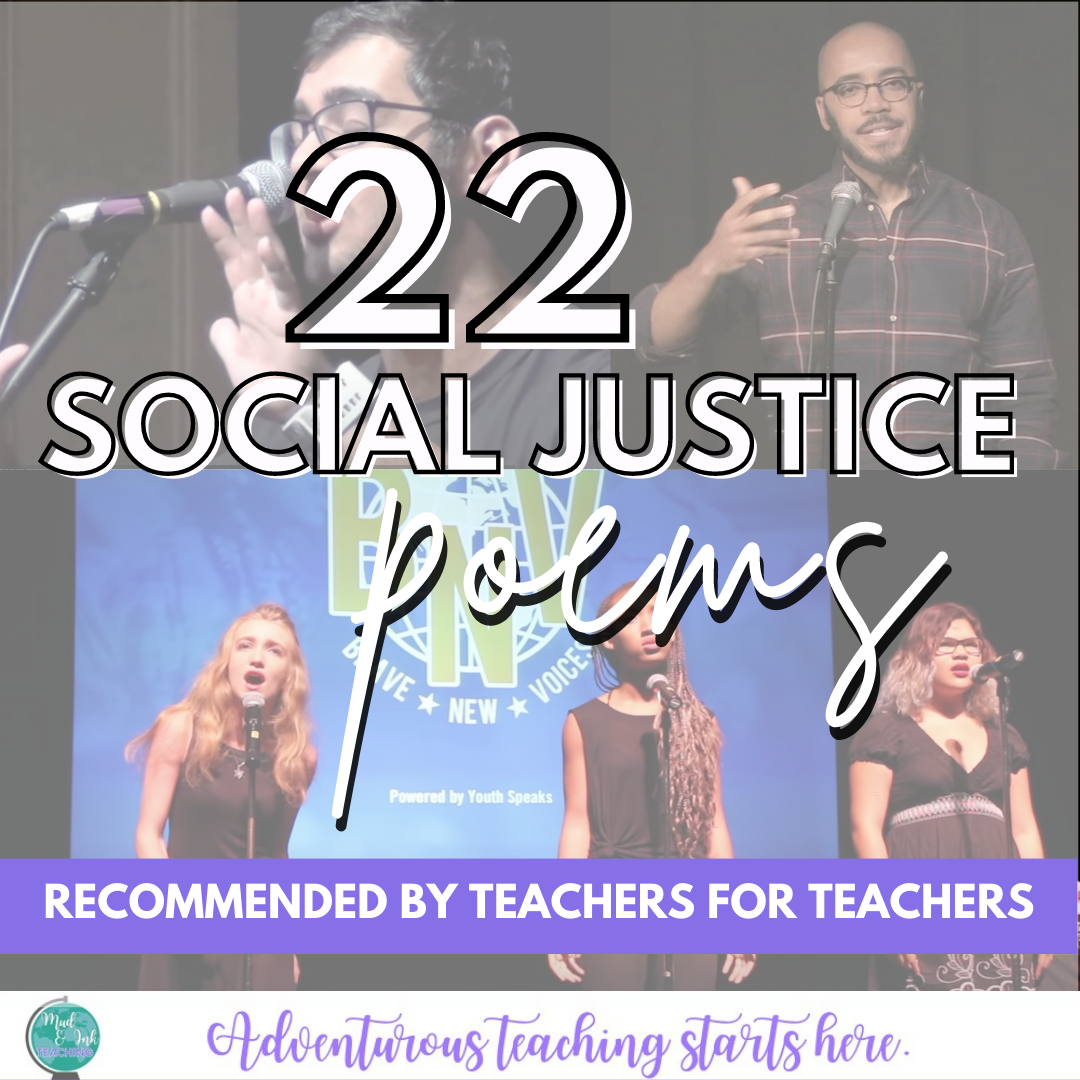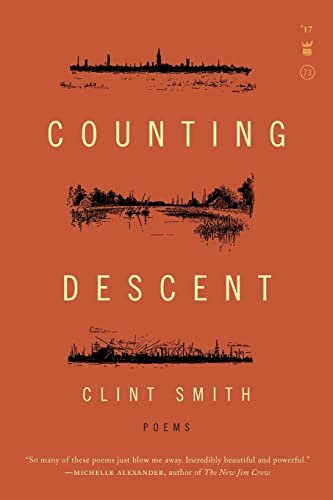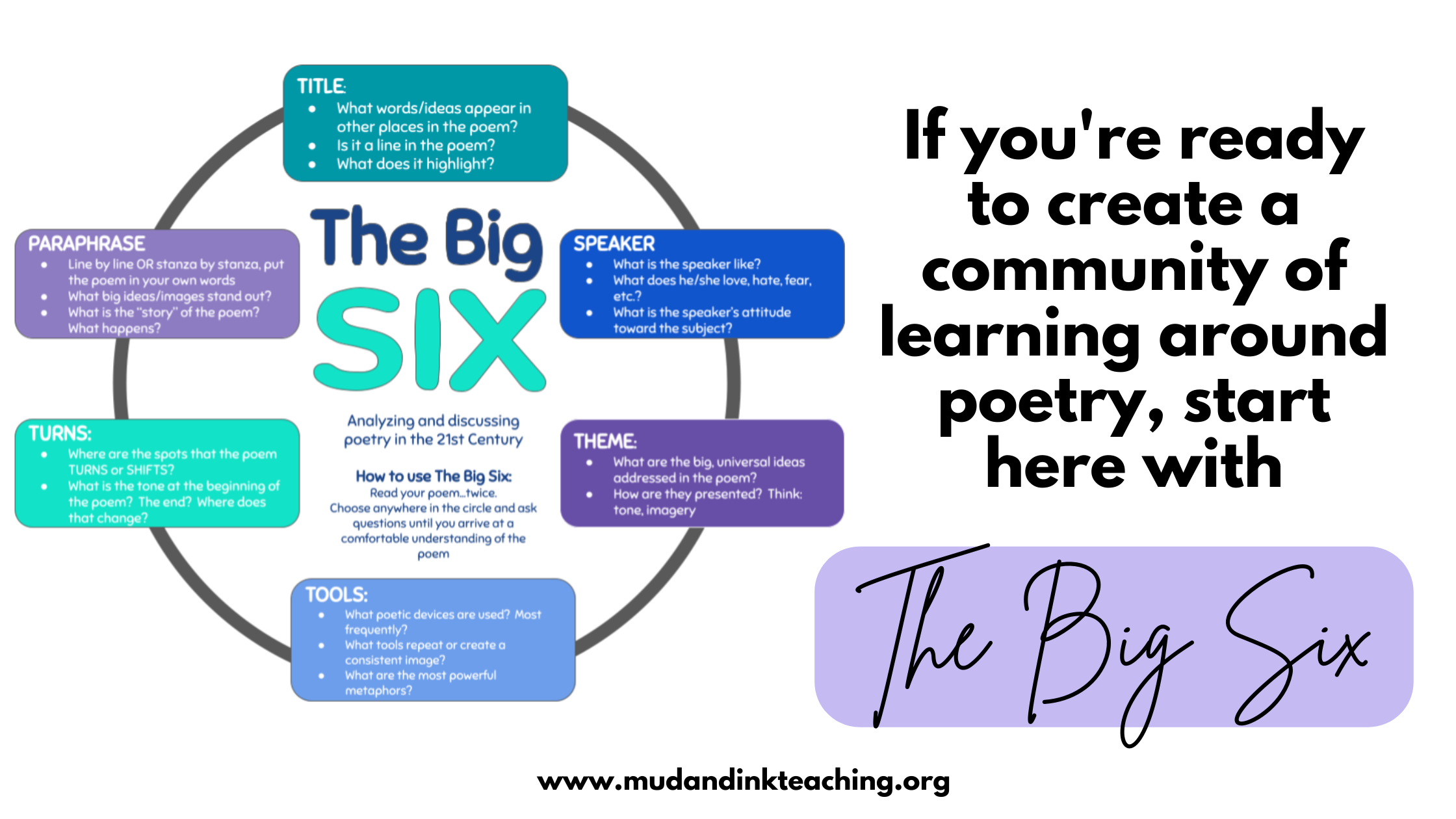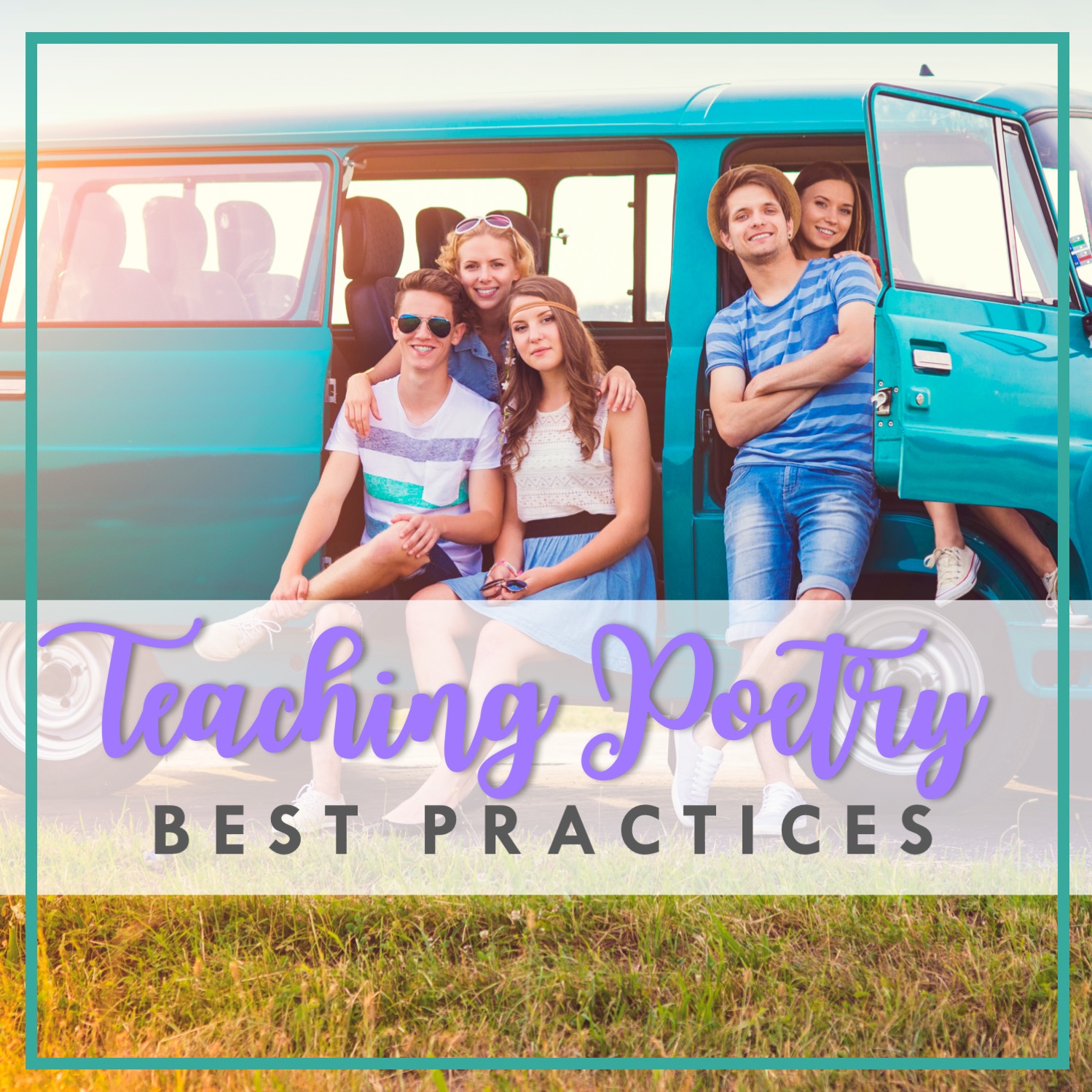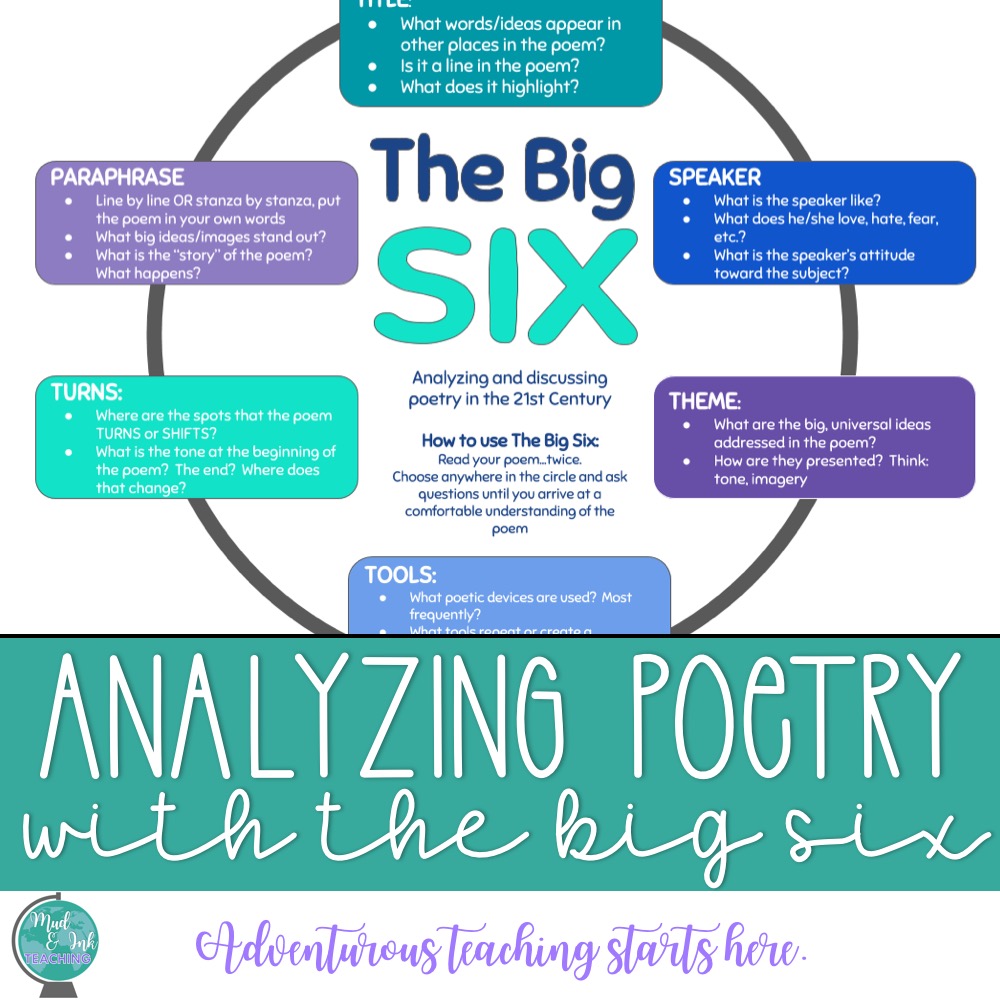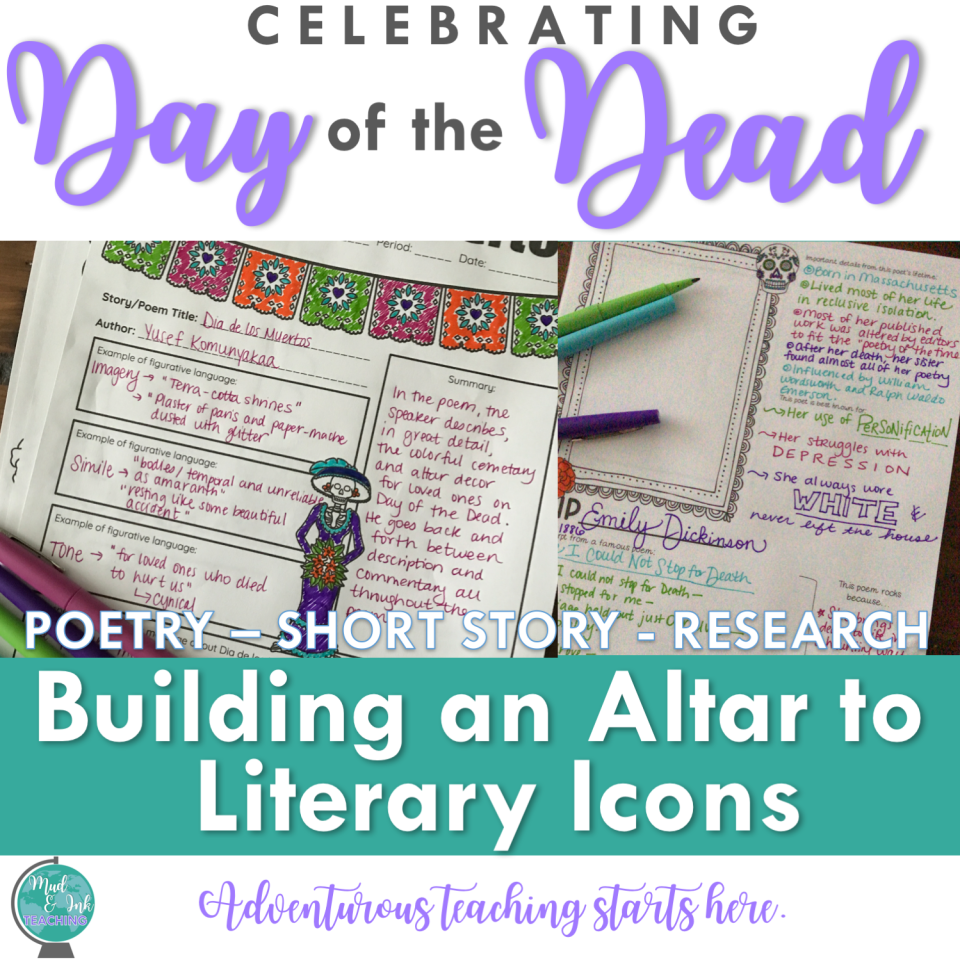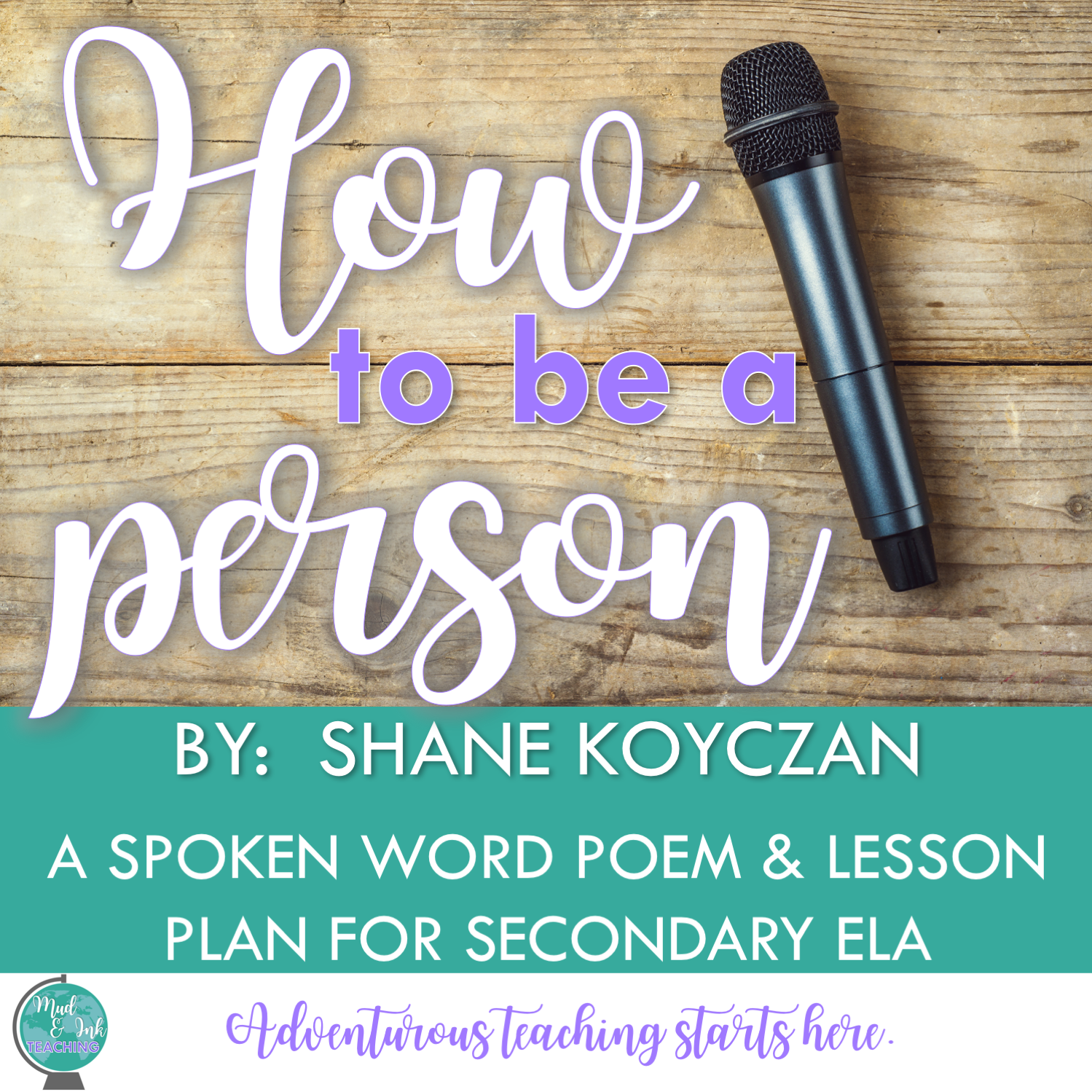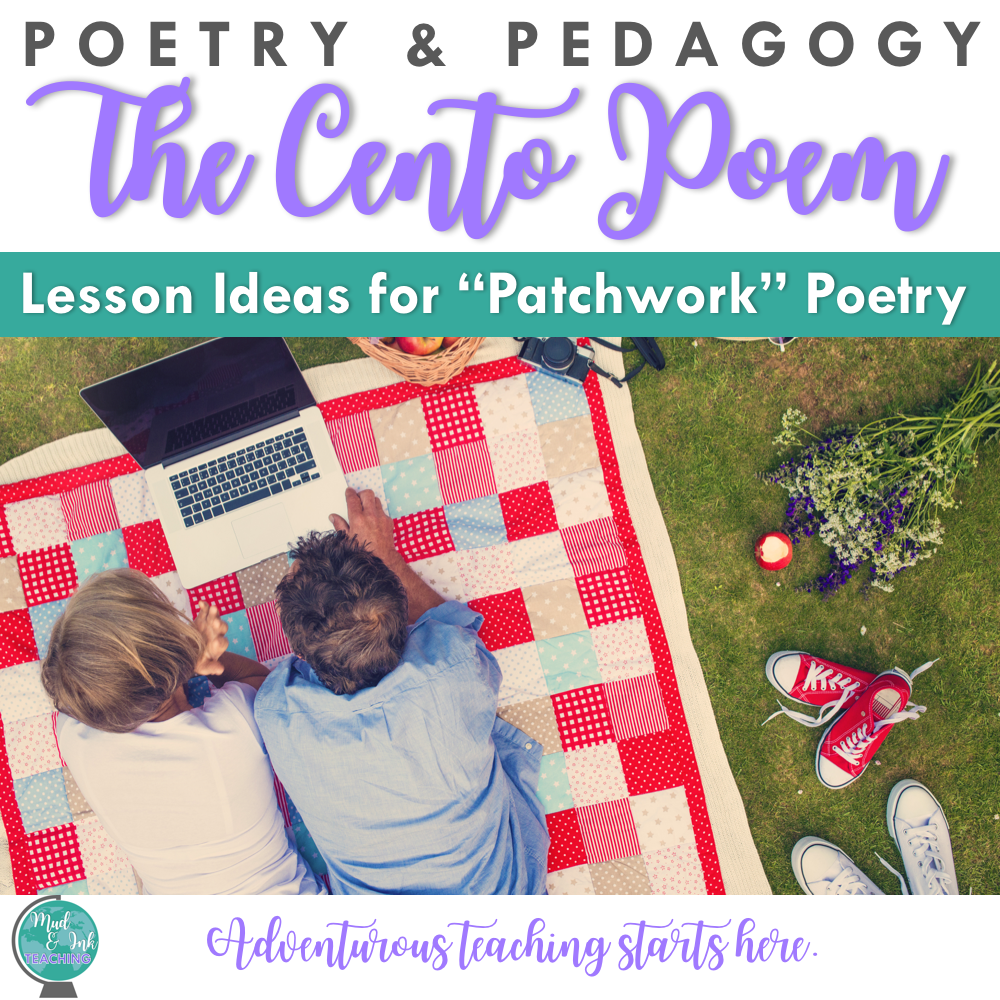
ADVENTUROUS TEACHING STARTS HERE.
Life's Blueprint: An ELA Lesson Honoring Dr. Martin Luther King Jr.
Dr. King’s legacy is especially powerful in the ELA classroom: his words, his rhetoric, and the passion with which he speaks them is not only worthy of study in its own right, but the overlaps into our content area make the analysis of the layers of his work that much more rich and impactful. Here is a free lesson walkthrough for your middle or high school English class celebrating Martin Luther King Jr.’s birthday.
Life's Blueprint: An ELA Lesson Honoring Dr. Martin Luther King Jr.
Dr. King’s legacy is especially powerful in the ELA classroom: his words, his rhetoric, and the passion with which he speaks them is not only worthy of study in its own right, but the overlaps into our content area make the analysis of the layers of his work that much more rich and impactful.
If your experience is anything like mine, I found myself a bit stuck in trying to find something different to read and analyze in honor of his birthday. By the time students got to me, they had already read or worked through “Letter from Birmingham Jail” and “I Have a Dream”, so a few years back I set out to find another great work to study that would be fresh for students and give them a new angle and understanding of the breadth of Dr. King's work.
What's your life blueprint?
This speech is a fantastic option if you find yourself in a similar position. Take a listen below:
I created a sketchnotes activity for you to use with some other lesson plan suggestions. I'm passing that along to you as just a thank you for being here and because sharing this work is so very important and I don't want anything to stand in the way of getting it done! On a seasonal note, this is the perfect e-learning lesson if school is called off around a snowy or brutally cold MLK day (it’s happened in Chicago before!).
LISTENING WITH SKETCHNOTES
The art of the sketchnote listening activity is that it takes us away from the “fill in the blank” mentality. With sketchnotes, students can actively listen, doodle, draw, sketch, and write in a way that vibes best with their brain’s pace and what emotionally resonates with them. You can play and pause the speech for each number to give students a chance to catch up, to share out loud, or to turn and talk to a partner. It’s important to note that each of the numbered components is NOT a question, rather, they’re phrases from the speech that serve to help students see the outline of his claim at a glance. The space on the page is for them to fill in with the details, evidence, and other words that exemplify that particular portion of the speech.
COMING BACK TOGETHER
Maybe students were turning and talking at a few moments during the speech, but if they haven’t checked in yet, give them that chance. Let them process in a small group table or in pairs through each of the three components of the speech.
Next, create an opportunity for full class discussion. I like to set up a post-it note gallery walk. I place these posters at the center or top of a giant post it note. Then, students move around the room to each of these pull quote posters to:
share a connection
add on to the idea
illustrate how this looks in their mind
elaborate with more detail
When the timer goes off (4-5 minutes is sufficient), students rotate to the next pull quote poster to add their thoughts. As they move, they can bring their sketchnotes with them to reference as they think through the speech with a larger context.
Finally, once students have rotated through each of the posters, you are set up to lead a large group discussion poster-by-poster soliciting students to share their contributions and discuss the speech even further.
GETTING STARTED
I set this lesson up and made the sketchnotes for you already! All you need to do is download them below.
THE IMPORTANCE OF BIPOC LEADERSHIP
The MLK Jr. holiday shouldn’t be the first time that a person of color is celebrated, highlighted, or studied. In the North American calendar, Dr. King’s birthday falls in January, and if we’ve gone an entire semester without looking at non-white leaders and cultural icons, that’s something important to reflect on.
There are opportunities all the time to give students access to meeting and researching the lives of powerful Black American “Influencers”. Before social media culture, activists, leaders, and speakers in the Black community were working tirelessly to shape the cultural landscape of America. Here is one way that I like to do that:
I hope you found these ideas helpful and inspiring. I hope you have a wonderful week at school and happy teaching!
LET’S GO SHOPPING
22 Teacher Favorites: Poems for Social Justice
Poetry is one of my favorite vehicles to have these critical thinking discussions about social justice. The voices in poetry are so raw, real, and products of the moments from which they came. This list of 22 came from talking to teachers online about their favorites to use in the classroom, as well as my own experience teaching poetry and creative writing.
Through poetry and song, many important movements have been carried through the power of the artistic spoken word. As we work to bring critical thinking and social justice into our classrooms, we not only are providing a powerful content area for skill building but also actively working to support the social and emotional learning of our students as they attempt to figure out the complicated world in which they live.
Poetry is one of my favorite vehicles to have these critical thinking discussions about social justice. The voices in poetry are so raw, real, and products of the moments from which they came. This list of 22 came from talking to teachers online about their favorites to use in the classroom, as well as my own experience teaching poetry and creative writing.
If you’re not sure what do to with a poem, I can help you sort that out:
IDEAS FOR A THEMATIC GROUPING OF POEMS:
Study a group of poems under the same Essential Question and work on building their literary analysis skills using The Big Six
Use this list to update or supplement your poems for Poetry March Madness
Use these poems to supplement an already existing novel unit as a missing voice, a voice to add complexity, or to mirror a character in the novel
Use these poems to create a Digital Poetry Choice Board
Use these poems for imitation: read, discuss, then attempt to recreate a style, a turn, a particular poetic device, etc.
And if you’re ready for an even deeper dive into the power of poetry, I’d love to have you join us in the Teaching Poetry & Creative Writing Workshop! It’s completely virtual and asynchronous, so come in anytime and gain dozens of new ideas and insights into your own practice.
And now, on to the list! Be sure to leave a comment below with additional suggestions and your own experience teaching these poems — your work is so inspiring!
“The Hill we climb” by Amanda Gorman
This poem was hot in the spotlight for the Presidential Inauguration of 2021, but it’s power has not lessened since then. I love the versatility of this poem: study it as a poem in isolation or look at it as an argument with a rhetorical analysis angle! If you need a lesson plan for analysis, I’ve got you covered:
2. A Wreath for Emmett Till
Picture books can be an amazing way to engage students in a lesson, and several teachers have reported that this one if a brilliant overlap between poetry and social justice.
3. “This is America” from childish gambino
This one is not recommended for younger students, but if you have some older students ready to dig into both the poetry of this song and the visual experience of the music video, you’ll have one of the most engaging, important lessons of your career.
4. “LET AMERICA BE AMERICA AGAIN” BY LANGSTON HUGHES
Of all Hughes’ poems, this one was always the one that most resonated and moved my students. It’s rich with imagery and allusion and I recommend taking your time with this one — it’s not a single class period lesson.
5. “IF WE MUST DIE” BY CLAUDE MCKAY
This poem is haunting and a beautiful study in tone and theme. I especially enjoy Kevin Young’s discussion of the poem and his beautiful performance, too.
6. “CITIZEN ILLEGAL” BY JOSE OLIVAREZ
I’ve had the true pleasure of meeting Jose Olivarez back in my days of working with Young Chicago Authors and Louder Than a Bomb, and I can say for certain, this work resonates with students. It’s certainly powerful for me, but whenever I put his work in front of students, something magical truly happens.
In this stunning debut, poet José Olivarez explores the stories, contradictions, joys, and sorrows that embody life in the spaces between Mexico and America. He paints vivid portraits of good kids, bad kids, families clinging to hope, life after the steel mills, gentrifying barrios, and everything in between. Drawing on the rich traditions of Latinx and Chicago writers like Sandra Cisneros and Gwendolyn Brooks, Olivarez creates a home out of life in the in-between. Combining wry humor with potent emotional force, Olivarez takes on complex issues of race, ethnicity, gender, class, and immigration using an everyday language that invites the reader in. Olivarez has a unique voice that makes him a poet to watch.
7. “NOT AN ELEGY FOR MIKE BROWN” BY DANEZ SMITH
This is a beautiful and gut-wrenching piece about the disproportionate attention paid to the death of Black Americans. It’s very short and would work nicely in a choice board where students could tackle it independently.
8. “ODE TO THE ONLY BLACK KID IN THE CLASS” BY CLINT SMITH
This and so many more from Smith’s anthology Counting Descent deserve a spot on this list and in your curriculum. In fact, Clint Smith’s name should be on the tip of every ELA teacher’s tongue when recommending poetry about the Black American experience.
Smith explores the cognitive dissonance that results from belonging to a community that unapologetically celebrates black humanity while living in a world that often renders blackness a caricature of fear. His poems move fluidly across personal and political histories, all the while reflecting on the social construction of our lived experiences. Smith brings the reader on a powerful journey forcing us to reflect on all that we learn growing up, and all that we seek to unlearn moving forward.
9. “NATIVE TONGUE” BY MICHA BOURNES
This poem is a fascinating look at the colonization of language and othering that’s been done to Black speech.
10. “ORAL TRADITION” BY WILLIAM NU’UTUPU GILES & TRAVIS T.
William Nu’utupu Giles is an afrakasi Samoan writer, and this poem focuses on the passing down of stories and traditions through spoken word for thousands of years.
11. “SOMEWHERE IN AMERICA” FROM BRAVE NEW VOICES
In this moving poem about censorship and government control, the speakers critique the contrasting experiences of America’s youth from the books they are allowed to read in school to the histories that are not taught.
12. “BLACK GIRL MAGIC” BY MAHOGANY BROWN
In this poem about belonging and experiencing othering, Brown examines what “Black Girl Magic” looks like through her eyes.
13. “ ELEPHANT” BY JOAQUIN ZIHUATANEJO
This poem focuses on the Rwandan Genocide of the 1990’s and compares the experience of a mother losing her child to that of an elephant holding her lifeless calf. This poem is packed with emotional language surrounding a lesser taught historical tragedy,
14. “SECOND ATTEMPT CROSSING” BY JAVIER ZAMORA
In this emotional poem, Zamora depicts the immense fear, uncertainty, and loss one feels when crossing over the US border illegally.
15. “GLORY” BY COMMON
From the movie Selma, this anthem speaks of an undying hope felt by those fighting for equality during the Civil Rights Movement despite great violence and discrimination against them.
16. “BULLET POINTS” BY JERICHO BROWN
In this poem, Brown explores hate crimes in America and the violence against Black people at the hands of law enforcement.
17. “TO THIS DAY” BY SHANE KOYCZAN
Shane Koyczan, a powerful spoken word poet, delivers a close look at the lasting effects of bullying in one’s childhood.
18. “WHAT CAN A POEM DO?” BY DARIUS V. DAUGHTRY
In this poem by Darius V. Daughtry, he explores the extent to which words, and more specifically poetry, have the power to cross borders and save lives. This poem is rich with figurative language and beautiful metaphors.
19. “CHINESE 101” BY SUN LUU
Luu describes his poem with this beautiful introduction:
“An ode to my mother, to my mother tongue, and all who've given me the opportunity to exist today. This is for all those who've tried to ostracize my people, who've tried to diminish the Chinese language, and have silenced and made caricatures of Asians in America. Here, I take back my language. I take back my culture. And find the voice to speak.”
20. “MISS AMERICA” BY RAMYA RAMANA
This poem is a response to racist comments and remarks after the announcement of Nina Davuluri, an Indian American woman, as the winner of Miss America in 2014.
21. “BROWN BOY, WHITE HOUSE” BY AMIR SAFI
Safi tells the story of living in post-9/11 America and dealing with the racial stereotyping and profiling he experienced.
22. “Passive Voice” by Laura Da
In this short but powerful poem, Da draws attention to the use of passive voice when describing the history of Native American culture.
EVEN MORE RESOURCES
4 Authors, Activists and Artists to Highlight During Black History Month
Here are four authors and artists that deserve a spotlight any time of year, but especially during Black History Month. Each has a speech, story, or TED Talk that you can share with students alongside a wide variety of units.
Take it from these student poets: Black history is American history. It's world history. It's ongoing and cannot be reduced to one month, but what February is all about is lifting up Black voices and celebrating the incredible works of Black people.
In the high school ELA classroom, this means that we have work to do to make this month special, memorable, and joyous. There is a rich literary history of Black American voices that can be showcased and I want to share some ideas with you outside of the same few voices that students always hear from.
ANGELA DAVIS
Who: an American political activist, professor, and author who was an active member in the Communist Party and the Black Panther Party (read more).
Check out : “The Gates of Freedom” a speech performed here and free lesson plan here
JAMES BALDWIN
Who: James Arthur Baldwin was an American novelist, playwright, essayist, poet, and activist. His essays, collected in Notes of a Native Son, explore intricacies of racial, sexual, and class distinctions in the United States during the mid-twentieth century (read more).
Check out: “Sonny's Blues" is a moving and important short story. This 1 hour live Zoom call is a bit long, but it's incredible PD for you as a teacher. Farah Jasmine Griffin, chair of Columbia University’s Department of African American and African Diaspora Studies, offers a close reading of James Baldwin’s unforgettable story of a jazz pianist’s struggles with his art and his addiction. And if you have a New York Times subscription, "The Discovery of What It Means to Be an American" is absolutely worth your time, and if you have the space for a novel study, you will love If Beale Street Could Talk.
AVA DUVERNAY
Who: Ava Marie DuVernay is an American filmmaker. She won the directing award in the U.S. dramatic competition at the 2012 Sundance Film Festival for her second feature film Middle of Nowhere, becoming the first black woman to win the award.
Check out: “The Power of Women”, a speech she gave at an awards ceremony with Variety magazine (short) or this other keynote address that she gave at the 2013 Film Independent Forum would be great for any speech or rhetorical analysis unit.
Jordan peele
Who: Jordan Haworth Peele is an American actor, comedian, and filmmaker. He is best known for his film and television work in the comedy and horror genres. Peele started his career in sketch comedy before transiting his career as a writer and director of psychological horror and satirical films. In 2017, Peele was included on the annual Time 100 list of the most influential people in the world
Check out: “How to Turn Fear Into Success”, a talk he gave at the Santa Barbara International Film Festival.
INTENTIONAL REPRESENTATION FOR STUDENTS
If you are all in for sharing more voices but at a loss for how to incorporate them into your regular classroom routine, try using a digital choice board. These choice boards can be used for early finishers, as bell work to start a class period, and even as a once a week lesson plan throughout a heritage month.
And if you STILL are looking for more ideas, I have a blog post featuring 9 incredible poets that deserve a place in your curriculum at any point of the year. You can check that out here! And further still, Marie and I published a podcast episode featuring some wonderful African American writers to feature in your curriculum and you can listen anytime here or on your favorite podcast listening platform.















